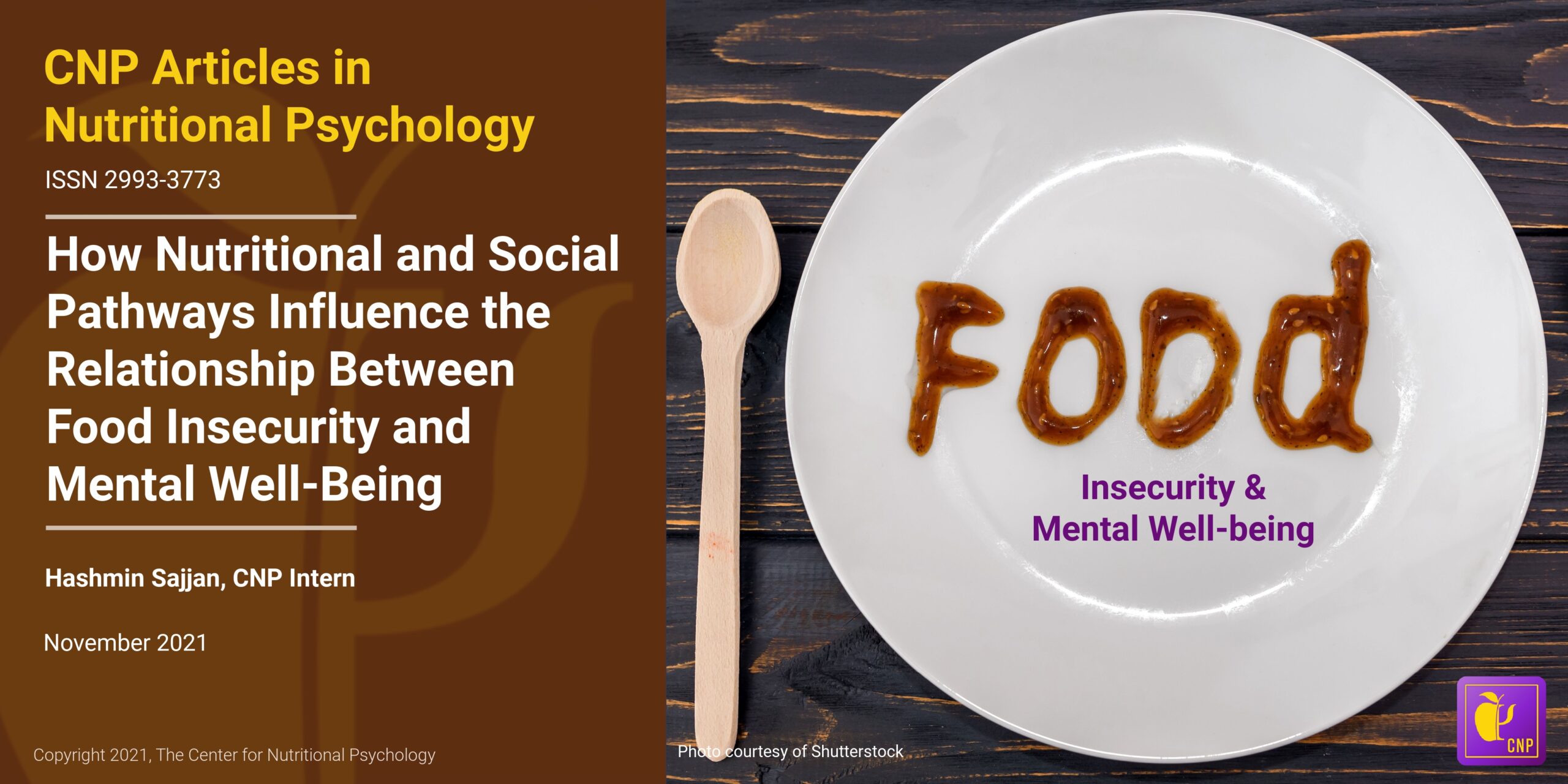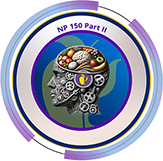- A study on rats published in Biological Research found that a high-fat diet alters gut microbiota composition and makes them obese
- This alteration changes specific aspects of communication between gut microbiota and the brain, increasing the expression of genes related to the neurotransmitter serotonin in a part of the brain that is involved in anxiety-related behaviors
- These changes make rats show more anxiety-related behaviors
Most people understand that eating lots of high-calorie food will make us gain weight. That is rather straightforward. However, human bodies have an intricate food intake regulation mechanism that tells us when to eat and when we have had enough. That mechanism is crucial for our survival. Without it, we could starve to death without ever feeling a desire to eat. Or we could eat so much that we die from overeating without ever noticing that we have eaten too much. Luckily, this never happens as our food intake mechanism works and works well. So, if we have this mechanism that regulates our food intake, how does obesity develop?
The development of obesity
Many argue that the world has been undergoing an obesity epidemic in the past several decades. The share of overweight and obese people has been increasing worldwide (Wong et al., 2022). This coincided with the wider availability of highly processed, energy-dense industrial foods, many of which contain additives and combinations of high-calorie ingredients not found in nature (Gearhardt et al., 2023; Hedrih, 2023; Monteiro et al., 2019; Wilding, 2001).
The share of overweight and obese people has been increasing worldwide, coinciding with the wider availability of highly processed, energy-dense industrial foods
While obesity in humans is thought to be caused by an interplay of many different factors (Wilding, 2001), studies on rodents consistently indicate that feeding them high-fat diets will dysregulate their food intake mechanisms, making them obese (Ikemoto et al., 1996, Lippert et al., 2020). Unlike normal chow for laboratory rodents, which is rich in carbohydrates but contains little fat, this obesity-inducing high-fat diet for laboratory rodents is rich both in fats and carbohydrates. This is similar to highly processed, industrial energy-dense foods considered a key generator of obesity in humans by many (Wilding, 2001).
Obesity and anxiety
Various changes in brain activity accompany the development of obesity. Studies have reported low-grade inflammation of the hypothalamus in obese individuals, the part of the brain that plays a key role in food intake regulation (Thaler et al., 2013), and specific alterations of activity in various other parts of the brain (Bhatt et al., 2023).
Various changes in brain activity accompany the development of obesity
Studies have also linked obesity with anxiety disorders. Researchers believe that inflammation of specific areas of the brain, thought to play a role in the development of obesity, might also lead to increased anxiety (De Noronha et al., 2024) (see Figure 1).

Figure 1. Impact of Obesity on brain activity and anxiety disorders
The current study
Study author Sylvana I. S. Rendeiro de Noronha and her colleagues note that previous studies indicate that feeding rats a high-fat diet leads to obesity and anxiety-like behaviors. However, the mechanism that produces this effect remains unknown, and these researchers wanted to explore it.
They hypothesized that eating a high-fat diet would alter the diversity and composition of the gut microbiome. This will, in turn, change the communication between the brain and gut microbiota (through the microbiota-gut-brain axis), leading to increased expression of serotonergic genes (genes involved in the synthesis, transport, reception, and breakdown of the neurotransmitter serotonin) in the caudal part of the dorsomedial dorsal raphe nucleus subregion of the brain (De Noronha et al., 2024). This subregion of the brain is associated with stress- and anxiety-related behavior. Therefore, these changes could lead to an increase in anxiety-like behaviors, explaining their association with the consumption of a high-fat diet (see Figure 2).

Figure 2. Hypothesis (Rendeiro de Noronha et al., 2024)
The study was conducted on 5-6-week-old male Wistar rats (a strain often used in research). The rats weighed around 100 grams each, and researchers housed them in groups of 4 in acrylic cages. They had free access to food and water.
Rats were divided into two groups. One group of 12 rats ate normal rat food (11% fat), while researchers fed the other group a high-fat diet (45% fat) for nine weeks. When the experimental diet started, rats were in a period of life corresponding to middle adolescence (5 weeks). They reached what can be considered adulthood by the time treatment ended and testing began.
The study authors used a series of behavioral tests to evaluate the presence of anxiety-like behaviors in these rats. They also collected rats’ feces to evaluate the composition of their gut microbiota. In the end, the rats were killed, and the study authors analyzed their brain tissue.

Figure 3. Study Procedure (Rendeiro de Noronha et al., 2024)
High-fat diet-induced obesity, some anxiety-related behaviors, and altered rats’ gut microbiota composition
Rats fed the high-fat diet developed obesity. They also showed increased anxiety-related behaviors on one behavioral test (elevated plus-maze). Still, in two other tests (light/dark box test and open field test), there were no differences between the two groups of rats.
Feces analysis showed that high-fat diet rats had different gut microbiota composition compared to rats that ate normal food. High-fat diet rats tended to have more bacteria belonging to the Firmicutes phylum in their guts. They also had higher abundances of bacteria belonging to Allobaculum, Blautia, and Dorea genera. On the other hand, rats that ate a normal diet tended to have more bacteria belonging to the genera Lactobacillus and Prevotella.
A high-fat diet increases the expression of serotonergic genes
A high-fat diet increases the expression of specific genes involved in the brain’s serotonin system. Notably, the expression of tph2, htr1a, and slc6a4 mRNA was increased in subregions of the dorsal raphe nucleus region of the brain, just as the study authors hypothesized.
Study authors believe that this increased gene expression was what produced the increase in anxiety-like behaviors. (see Figure 4).

Figure 4. Research findings (Rendeiro de Noronha et al., 2024)
Conclusions
The study demonstrated how a high-fat diet altered the gut microbiome in rats and led to obesity. This altered gut microbiome altered signaling to the brain through the microbiome-gut-brain axis, increasing the expression of specific genes involved in the serotonergic system in the part of the brain involved in anxiety-like behaviors. This increase, in turn, increased anxiety-like behaviors.
This study was done on rats. Humans are a different species, but they share many physiological similarities. Because of this, it is likely that these mechanisms work in a similar way in humans as well and that the effects of a high-fat diet would not be too dissimilar.
The paper “High-fat diet, microbiome-gut-brain axis signaling, and anxiety-like behavior in male rats” was authored by Sylvana I. S. Rendeiro de Noronha, Lauro Angelo Gonçalves de Moraes, James E. Hassell Jr., Christopher E. Stamper, Mathew R. Arnold, Jared D. Heinze, Christine L. Foxx, Margaret M. Lieb, Kristin E. Cler, Bree L. Karns, Sophia Jaekel, Kelsey M. Loupy, Fernanda C. S. Silva, Deoclécio Alves Chianca-Jr. , Christopher A. Lowry, and Rodrigo Cunha de Menezes.
References
Bhatt, R. R., Todorov, S., Sood, R., Ravichandran, S., Kilpatrick, L. A., Peng, N., Liu, C., Vora, P. P., Jahanshad, N., Gupta, A., & Bhatt, R. R. (2023). Integrated multi-modal brain signatures predict sex-specific obesity status. Brain Communications, 5(2), 1–14. https://doi.org/10.1093/BRAINCOMMS/FCAD098
De Noronha, S. I. S. R., De Moraes, L. A. G., Hassell, J. E., Stamper, C. E., Arnold, M. R., Heinze, J. D., Foxx, C. L., Lieb, M. M., Cler, K. E., Karns, B. L., Jaekel, S., Loupy, K. M., Silva, F. C. S., Chianca-, D. A., Lowry, C. A., & De Menezes, R. C. (2024). High-fat diet, microbiome-gut-brain axis signaling, and anxiety-like behavior in male rats. Biological Research, 57(1), 23. https://doi.org/10.1186/s40659-024-00505-1
Gearhardt, A. N., Bueno, N. B., DiFeliceantonio, A. G., Roberto, C. A., Jiménez-Murcia, S., & Fernandez-Aranda, F. (2023). Social, clinical, and policy implications of ultra-processed food addiction. BMJ, e075354. https://doi.org/10.1136/bmj-2023-075354
Hedrih, V. (2023). Scientists Propose that Ultra-Processed Foods be Classified as Addictive Substances. CNP Articles in Nutritional Psychology. https://www.nutritional-psychology.org/scientists-propose-that-ultra-processed-foods-be-classified-as-addictive-substances/
Ikemoto, S., Takahashi, M., Tsunoda, N., Maruyama, K., Itakura, H., & Ezaki, O. (1996). High-fat diet-induced hyperglycemia and obesity in mice: Differential effects of dietary oils. Metabolism, 45(12), 1539–1546. https://doi.org/10.1016/S0026-0495(96)90185-7
Lippert, R. N., Hess, S., Klemm, P., Burgeno, L. M., Jahans-Price T, Walton, M. E., Kloppenburg, P., & Brüning, J. C. (2020). Maternal high-fat diet during lactation reprograms the dopaminergic circuitry in mice. Journal of Clinical Investigation, 130(7), 3761–3776.
Monteiro, C. A., Cannon, G., Levy, R. B., Moubarac, J. C., Louzada, M. L. C., Rauber, F., Khandpur, N., Cediel, G., Neri, D., Martinez-Steele, E., Baraldi, L. G., & Jaime, P. C. (2019). Ultra-processed foods: What they are and how to identify them. Public Health Nutrition, 22(5), 936–941. https://doi.org/10.1017/S1368980018003762
Thaler, J. P., Guyenet, S. J., Dorfman, M. D., Wisse, B. E., & Schwartz, M. W. (2013). Hypothalamic Inflammation: Marker or Mechanism of Obesity Pathogenesis? Diabetes, 62(8), 2629–2634. https://doi.org/10.2337/DB12-1605
Wilding, J. P. H. (2001). Causes of obesity. Practical Diabetes International, 18(8), 288–292. https://doi.org/10.1002/PDI.277
Wong, M. C., Mccarthy, C., Fearnbach, N., Yang, S., Shepherd, J., & Heymsfield, S. B. (2022). Emergence of the obesity epidemic: 6-decade visualization with humanoid avatars. The American Journal of Clinical Nutrition, 115(4), 1189–1193. https://doi.org/10.1093/AJCN/NQAC005









